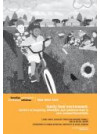The Family Food Environment Survey (FFES) is a cross-sectional survey of 136 New Zealand families living in Dunedin and Wellington with one or more children aged between five and 18 years. This survey was commissioned by the Families Commission to determine the barriers to acquiring affordable and nutritious food in New Zealand households.
In developed countries we are surrounded by an abundance of food choices. For some people, however, even in developed countries, food and access to food is not a given. In order to capture the experiences of those people lacking all the food they need, and to monitor health consequences, researchers have developed methods for measuring the extent of food insecurity within populations. ‘Food insecurity’ in this report is defined as “limited or uncertain availability of nutritionally adequate and safe foods or limited ability to acquire acceptable foods in a socially acceptable way” (Holben, 2006, p. 447).
This research highlights the similarities between New Zealand families across the socio-economic spectrum in terms of behaviour surrounding food acquisition, preparation and eating together. However solutions for low socio-economic groups based on education, increasing skills and training in food preparation and nutrition may only make a small impact on food insecurity if the upstream determinants, such as limited income and economic constraints, are not addressed. In a recession it is likely that rates of food insecurity will increase. Those who develop nutritional guidelines and recommendations need to be aware of the economic constraints on many New Zealand families.
This report was produced for the Families Commission’s Blue Skies Fund by Claire Smith, Associate Professor Winsome Parnell and Dr Rachel Brown, Department of Human Nutrition, University of Otago, Dunedin.
Purpose
Food insecurity is associated with poor nutritional outcomes, and it was reported in half of households in the 2002 National Children’s Nutrition Survey (CNS02) (Parnell, Wilson, Mann, & Gray, 2005). Both physical and economic access to food have been described as important influences on food-purchasing practices and choices.
In New Zealand, households with children have the highest rates of food insecurity (Russell et al, 1999). The home and family environment is an important setting for shaping both adults’ and children’s eating. Food choices are not just based on decisions by individuals, but are also influenced by the family context and decisions in the household (Ricciuto, Tarasuk, & Yatchew, 2006).
Before appropriate strategies and interventions can be developed – in particular, for lower socioeconomic groups – it is important that we have more information about households’ food acquisition and consumption. Factors that affect these things may or may not be outside the control of the household. Health-promotion activities that take these factors into consideration may be more successful.
The aim of the FFES was to describe environmental and behavioural factors of New Zealand families with children aged five to 18 years in the cities of Dunedin and Wellington with respect to access to food, buying food, meal planning and patterns, and to examine how they differ by socio-economic status (including income) and their relationship to food security.
Methodology
The FFES was a cross-sectional survey carried out in the cities of Dunedin and Wellington. Participants were consenting households (n=136) with at least one child living at home between the ages of five and 18 years. The primary participant was the person mainly responsible for food provision and preparation. This person was interviewed in their home and answered questions on behalf of the household. Recruitment and participation took place between October 2007 and October 2008.
Ethical approval was granted by the University of Otago Ethics Committee (14 August 2007) and written informed consent was obtained from all participants.
Key Results
Demographic predictors of household food insecurity in this group were low household income, government benefits as the main source of income and single parent households. In the low-income group, 47 percent of households reported that food ran out in their household because of a lack of money ‘often’ or ‘sometimes’.
The low-income group purchased fewer types of vegetables per week on average (5.9) than the high income group (7.8). Low-income groups were more likely to agree with the statement “buying more fruit and vegetables than we already do would be difficult on our budget” and disagree with the statement that “fruit and vegetables are affordable in the shop where we usually do our food shopping”.
Overall use of ready-to-eat food was similar across the socio-economic spectrum; high-income households, however, were more likely to go to restaurants (mean 1.2 occasions per month) and cafes (3.5) compared to low-income households (1.6 times a month for cafes and 0.3 for restaurants).
Access to food shops and ownership of basic kitchen amenities was not an issue for households in this study, even those reporting food insecurity. Approximately one hour was spent by family members on food preparation and cleaning up for main meals every day. The low income group did not differ from others in terms of behaviour such as budgeting for food, planning and eating meals as a family.
The factor with the most impact on food security for New Zealand families included in this survey was economic. In particular, there was a strong association between food insecurity and low income for those receiving government benefits. The relaxation of economic constraints in these households may be the most effective way to reduce food insecurity. The social and economic determinants of food insecurity, such as income, housing and the cost of food, must be considered in any interventions to address this issue.

